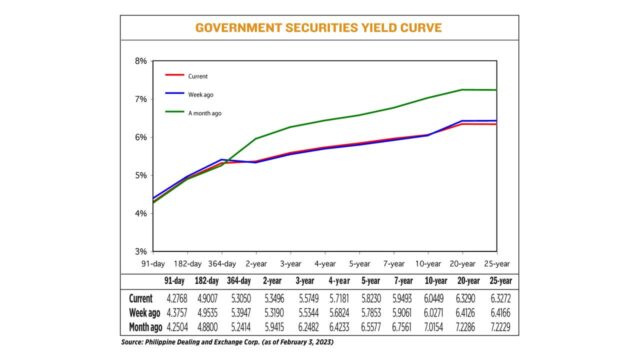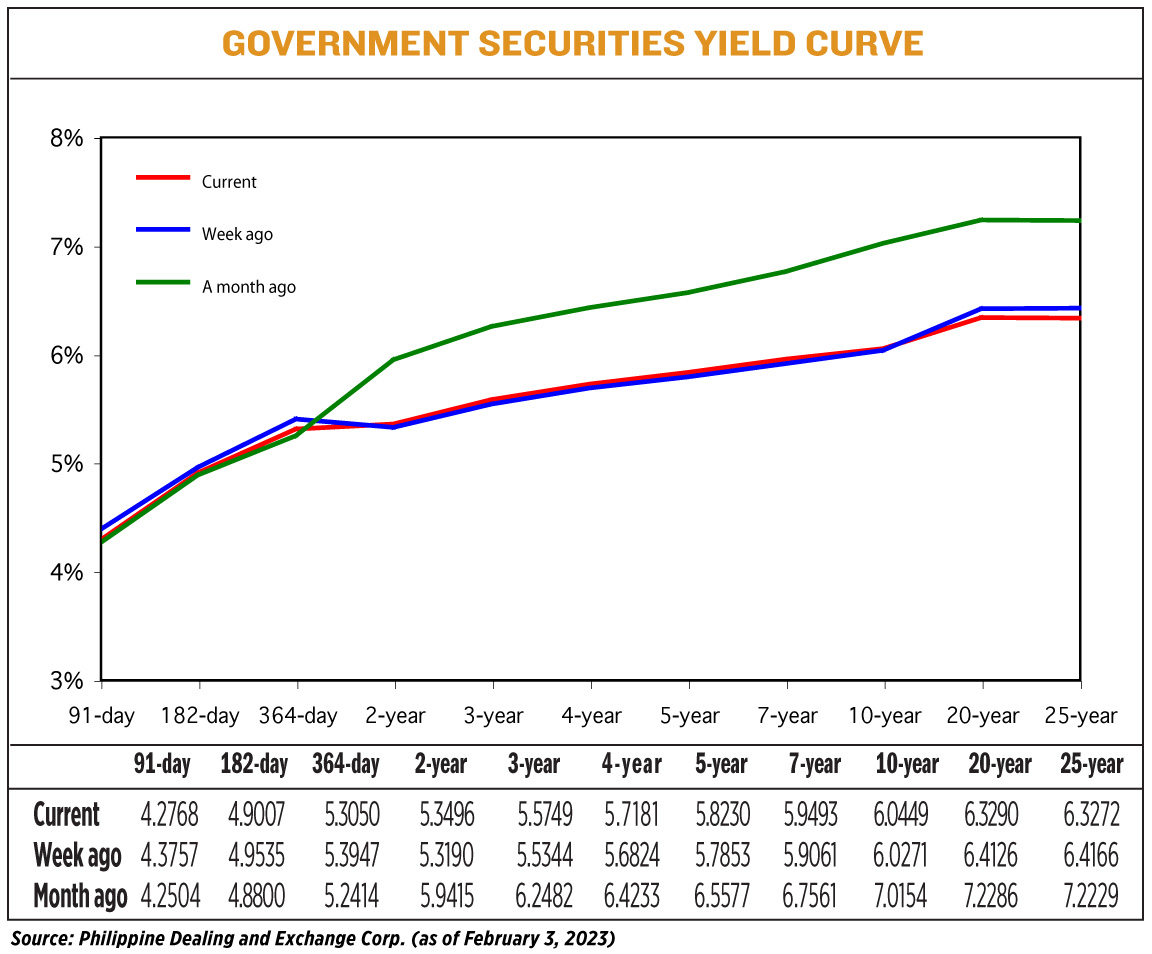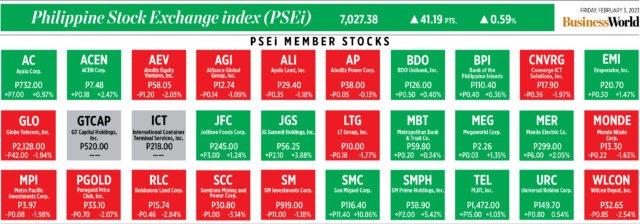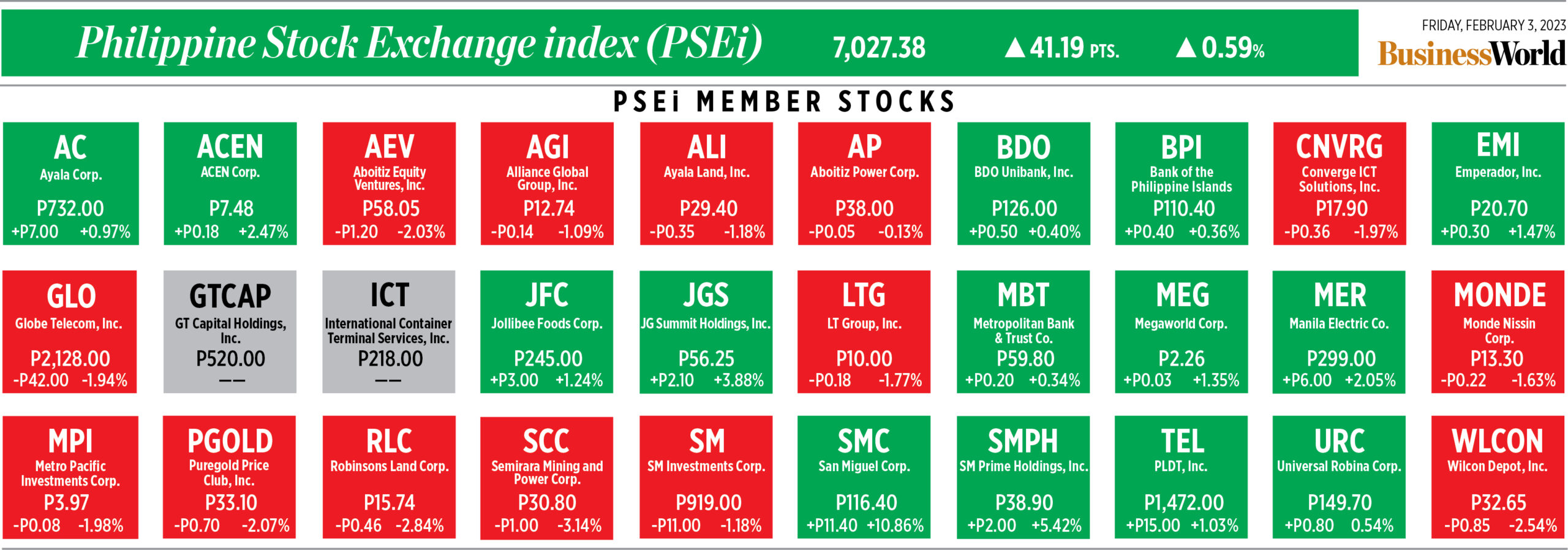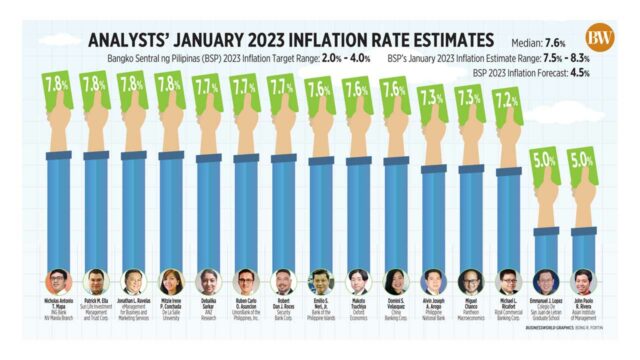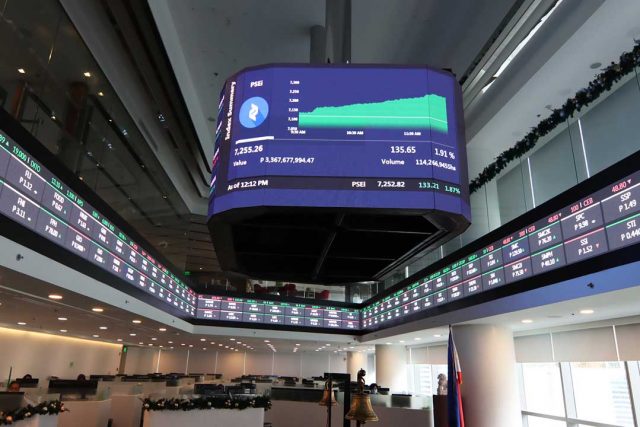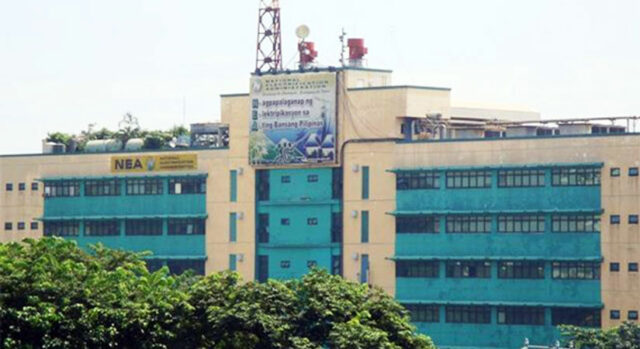THE PESO may strengthen this week after the US Federal Reserve delivered a smaller rate hike and with the government set to begin its retail Treasury bond (RTB) offer.
The local unit closed at P53.68 a dollar on Friday, strengthening by 16.50 centavos from its P53.845 finish on Thursday, data from the Bankers Association of the Philippines’ website showed.
Week on week, the peso also climbed by 79 centavos from its P54.47 finish on Jan. 27.
The peso opened Friday’s session at P53.93 per dollar, which was also its weakest showing of the day. Its intraday best was at P53.63 against the greenback.
Dollars exchanged went down to $1.165 billion on Friday from $1.62 billion on Thursday.
The peso rose on Friday amid lower global crude oil prices, Rizal Commercial Banking Corp. Chief Economist Michael L. Ricafort said in a Viber message.
Brent crude futures settled at $82.17 a barrel on Friday, shedding 67 cents or 0.8%, Reuters reported. West Texas Intermediate crude settled at $75.88 a barrel, down 53 cents or 0.7%.
“The peso also strengthened after the announcement of the upcoming retail Treasury bond offering on Feb. 7 that could attract some of the excess liquidity/investments from the financial system,” Mr. Ricafort added.
The Treasury announced on Friday that it is looking to raise at least P30 billion from its offer of 5.5-year retail bonds, with the rate-setting auction scheduled on Feb. 7.
The minimum investment amount for the papers is at P5,000.
The offering also includes a swap option for some bonds maturing this year.
The offer period will run until Feb. 17, with the issue date set on Feb. 22.
The government last offered peso retail bonds in September 2022, raising P162.72 billion.
Meanwhile, a trader noted that the peso was an outlier in Asia against the dollar, which could have been due to “remittance flows over the weekend and overall improved risk sentiment.”
Most Asian currencies fell against a firmer dollar on Friday as investors awaited the key US nonfarm payrolls report for further clues about the US Federal Reserve’s policy path after dovish signals from global central banks.
The dollar index was up 0.1% at 101.85, as of 0615 GMT on Friday, away from Wednesday’s nine-month low of 100.80.
For this week, UnionBank of the Philippines, Inc. Chief Economist Ruben Carlo O. Asuncion said in a report that the peso could appreciate further as the dollar’s weakness may continue in the coming days.
“Broad dollar weakness will persist on improved risk appetite backed by the market implications of the latest Federal Open Market Committee (FOMC) meeting outcome alongside the Fed Chair [Jerome H.] Powell’s acknowledgment of the inception of US disinflation,” Mr. Asuncion said.
“Rumors circulating of an RTB offer size of P400 billion with some foreign participation may support additional dollar selling momentum in the next few weeks,” he added.
The FOMC hiked borrowing costs by 25 basis points (bps) at its Jan. 31 to Feb. 1 meeting, bringing the fed funds rate to a 4.5% to 4.75% range, the highest since 2007.
The US central bank has now hiked rates by 450 bps since March 2022.
In remarks after the meeting, Mr. Powell acknowledged that inflation was starting to ease, although he also said it is still unclear how high borrowing costs still need to go to bring the average rate of price increases back within its target.
The Fed statement after the meeting also indicated that future rate increases would be in 25-bp increments.
Meanwhile, the trader said peso-dollar trading could take its cue from US labor data released on Friday.
The US Labor department reported that nonfarm payrolls increased by 517,000 jobs in January, Reuters reported.
US unemployment growth also hit a 53-and-a-half-year low of 3.4%, slower than December’s 3.5%.
However, average hourly earnings only increased by 0.3% last month, compared with 0.4% in December.
This lowered the year-on-year increase in wages to 4.4%, the smallest rise since August 2021, from 4.8% in December.
The trader expects the peso to trade between P52.50 and P54.50 against the dollar this week, while Mr. Ricafort gave a forecast range of P53.40 to P53.80. Mr. Asuncion sees the peso moving from P53.50 to P54.10. — A.M.C. Sy with Reuters




